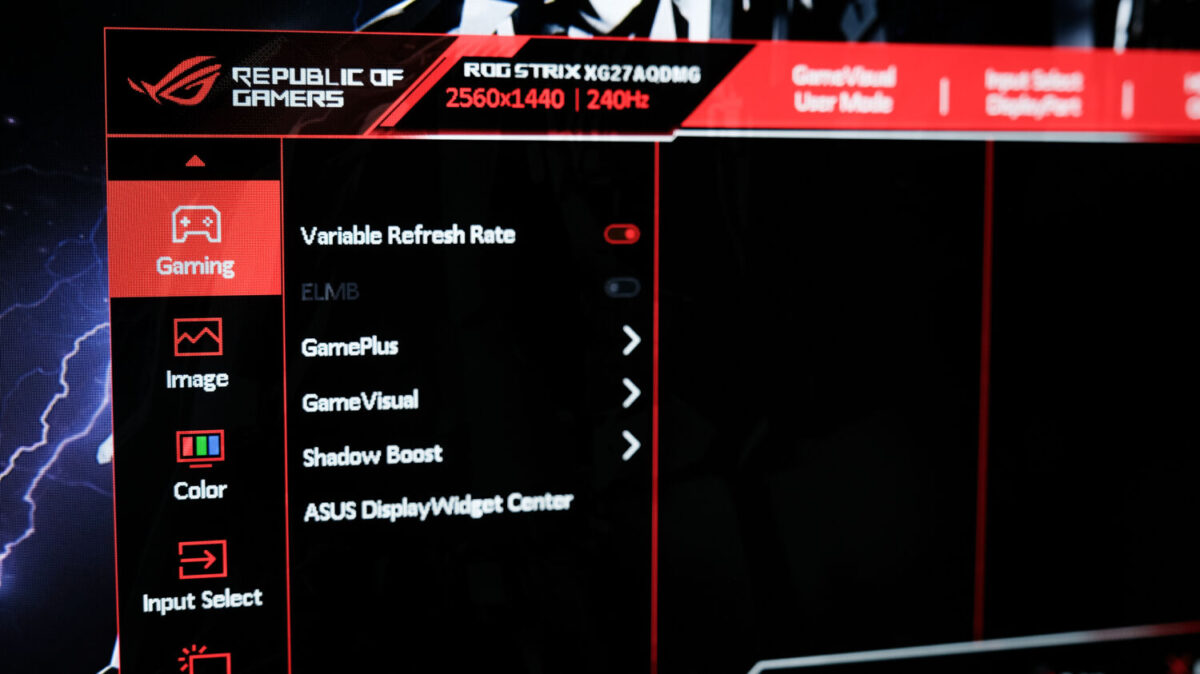OLED monitors have come a long way in the market, evolving from niche products to becoming mainstream choices for gamers and creative professionals alike. Initially praised for their exceptional contrast and deep blacks, OLED tech has continued to push the boundaries of brightness and colour accuracy, resetting what users expect from a display.

Amidst the growth, the segment has followed the trajectory established by its television bretheren and splintered off into different tangents, and the likes of QD-OLED (Quantum Dot OLED) and WOLED aka White OLED, have made their mark as some of the latest developments in the arena. The incorporation of quantum dots brings along enhanced colour performance and brightness levels, while WOLED remains competitive by focusing on maximising high dynamic range (HDR) performance and brightness. The ASUS ROG Strix XG27AQDMG, which features a 27-inch 1440p WOLED panel with a 240Hz refresh rate, exemplifies this distinction by offering superior gaming experiences with advanced features catering to the needs of serious gamers.

Cutting a sleek and modern figure, the monitor comes equipped with slim bezels and a glossy display that enhances its premium look. It opts for a more low-profile aesthetic, taking the form of subtle etching and an illuminated logo on the rear, which can be customised using the on-screen menu or coordinated with other RGB-LED devices via ASUS’ Aura Sync software.

The stand is compact and flat, minimising its footprint on the desk and allowing for ergonomic adjustments such as height (0~120mm), tilt (+20° ~ -5°), swivel (+45° ~ -45°), and pivot (+90° ~ -90°). As the monitor is VESA compatible, users will be able to attach it to various mounts and configure a setup that fits their work or play space. Compared to past ROG models, the XG27AQDMG is subtle in its design language and does not scream “gamer” at first glance.
There are also basic but sufficient connectivity options, including one DisplayPort 1.4 port, two HDMI 2.0 ports, two USB-A ports for connecting peripherals, and a USB-B upstream port. It’s important to note, though, that the monitor does not support HDMI 2.1 (sorry PlayStation 5 owners), which limits the maximum refresh rate to 144Hz over HDMI, while the full 240Hz is only achievable via DisplayPort.

On-screen navigation is accessed through a joystick on the underside, making it easy to navigate and adjust settings. The menus are logically arranged, with extensive image quality adjustments available, including preset modes, colour temperature, gamma settings, and six-axis colour customisation. For those new to OLED monitors, some additional time will be needed to arrive at the right display settings.

Put it into action, the glossy coating on its 2560×1440 panel delivers sharper images as opposed to traditional matte offerings, even if it doesn’t come close to those on OLED TV displays. In standard dynamic range (SDR) mode, the XG27AQDMG reaches a maximum brightness of 260 nits, which, while competitive with other OLED monitors in the market, isn’t particularly remarkable. Still, the blacks prove beneficial for games and movies with a darker presentation, offering deep and immersive visuals without straining the eye.
Where it truly shines is in HDR mode. Here, it can achieve a peak brightness of 724 nits – higher than its QD-OLED competitors that typically top out at 400 nits. Part of the magic can be credited to WOLED tech and its incorporation of a white sub-pixel in addition to the traditional red, green, and blue (RGB) sub-pixels found in standard OLED panels. Unlike the latter, WOLED panels use a white OLED emitter layer that produces white light, which then passes through RGB colour filters to create the desired colours. The additional white sub-pixel also allows more light to pass through, resulting in higher luminance levels.

Essentially, this enhanced brightness brings out more detail in luminous areas of a scene, making HDR content on the monitor look exceptionally vibrant and detailed. There’s a small hitch, however – orange tones appear somewhat undersaturated, translating into skin tone issues that are exacerbated by the limited colour customisation in HDR, restricted to three nearly identical presets.

In particular, the problem is more noticeable when running SDR emulation in HDR, and remains slightly off in pure HDR scenes. All other colours look good elsewhere, with orange tones appearing just fine in sRGB mode. For now, the recommendation is to turn off HDR when not viewing HDR content, and hopefully a future firmware update will be able to address the issue.

As a gaming monitor, it’s important for the ASUS ROG Strix XG27AQDMG to nail motion performance – and it does. The 240Hz refresh rate combined with a 0.03ms response time ensures smooth and responsive gameplay, but there’s also the Extreme Low Motion Blur (ELMB) mode that reduces motion blur with backlight strobing. While effective, the feature reduces brightness and is limited to a 120Hz refresh rate. Additionally, the monitor supports a wide range of adaptive sync technologies, including VESA Adaptive Sync 240, Nvidia G-Sync Compatible, and AMD FreeSync Premium Pro, for a tear-free gaming experience across various platforms.

Putting it through its paces in Doom Eternal yielded stunning visuals in HDR mode and undersaturated orange hues, as mentioned earlier. Mowing through hordes of demons proved to be a smooth experience, easily exceeding the bar when compared to previously reviewed monitors. When it comes to SDR performance, the monitor continues to excel with accurate colours in Hades 2 and Zenless Zone Zero. It was highly capable of keeping up with the on-screen action for both games, handling the constant changes in motion seamlessly and without much effort.

A widespread concern with OLED technology is screen burn-in, and ASUS has taken measures to reduce the chances of it happening. The XG27AQDMG boasts several tailored features such as pixel shifting, a brightness limiter for static elements, and pixel shifting, which is less aggressive than on the ROG Swift OLED PG27AQDM, but does appear from time to time to keep it in tip-top shape.
The ASUS ROG Strix XG27AQDMG is a compelling option for gamers seeking a highly competent OLED monitor, with its HDR performance, high refresh rate, and advanced gaming features adding to the allure of a US$749 or S$1,199 price tag. While it has minor drawbacks, such as limited HDMI 2.0 support and undersaturated colours, its overall value and performance make it a strong contender in the OLED market. Whether you’re a hardcore gamer or a content creator, the monitor offers an exceptional visual experience that is hard to beat.
GEEK REVIEW SCORE
Summary
While OLEDs generally come from the same source, ASUS has done well to show off the potential of its ROG gaming monitor range. The ROG Strix XG27AQDMG is proof that the sweet spot between affordability and feature-packed functionality can be achieved, making it an easy upgrade for anyone coming over from an IPS display.
Overall
8.3/10-
Aesthetics - 8/10
8/10
-
Build Quality - 9/10
9/10
-
Performance - 8/10
8/10
-
Value - 8/10
8/10
-
Geek Satisfaction - 8.5/10
8.5/10
Gerald currently straddles between his love of video games and board gaming. There’s nothing that interests him more than trying out the newest and fanciest gadget in town as well. He dreams of publishing a board game sometime in the future!











